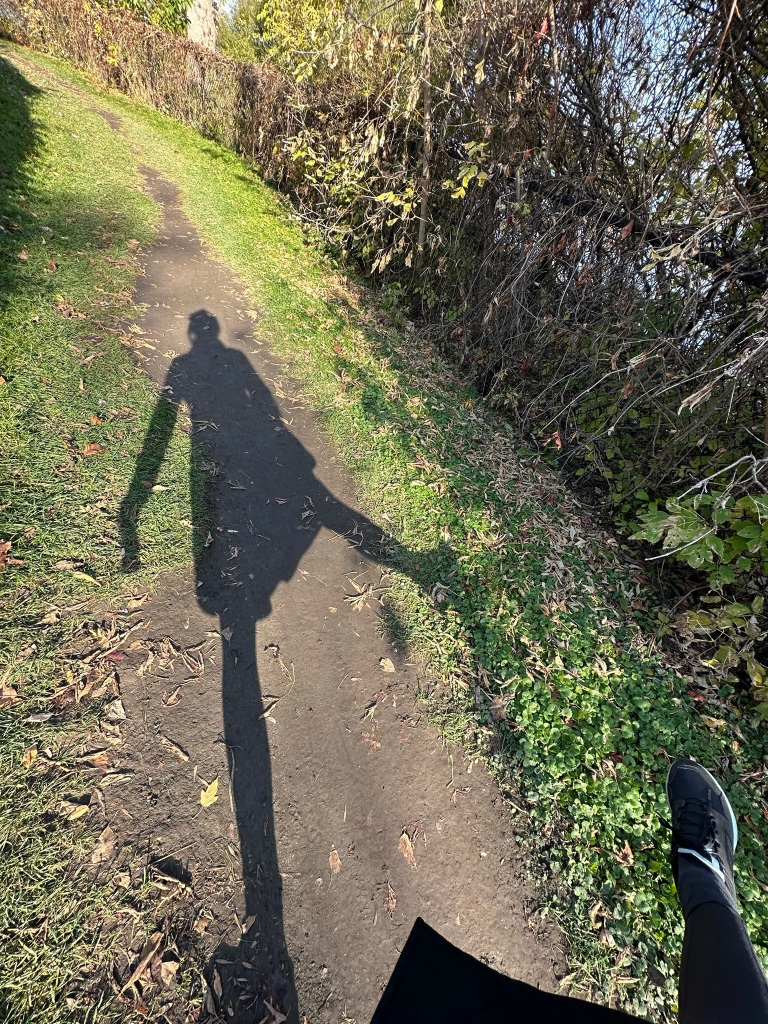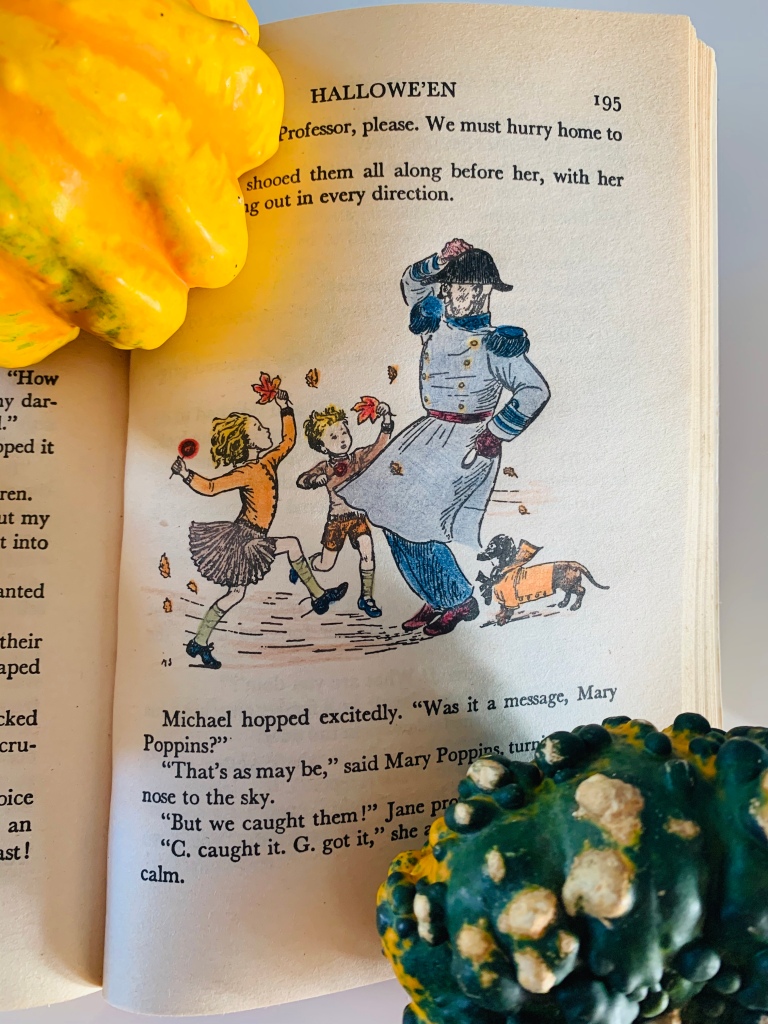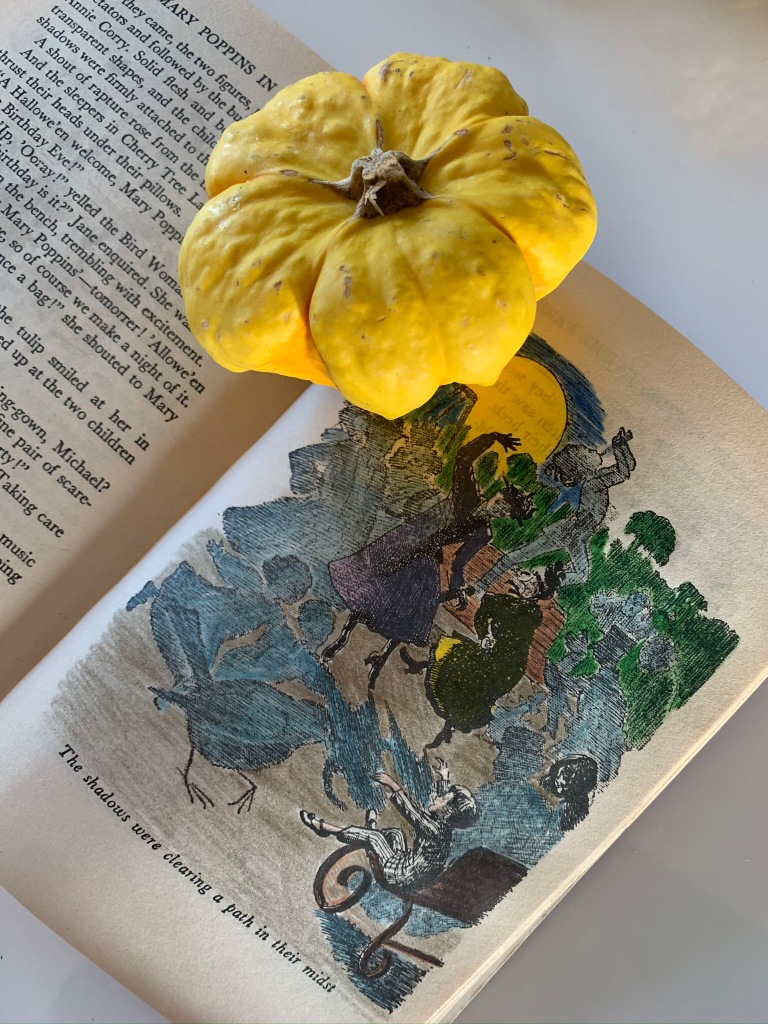
I used to play with my shadow as a kid. I tried to run away from it, but no matter how fast I ran, I could never outrun it. Every time I looked down there it was, glued to my feet, sometimes in front of me, sometimes behind, sometimes on my left side and sometimes on my right. I was never certain of its position, but I was certain of its presence, even on rainy days. I knew that it was there, only, it was invisible for the time being.
Occasionally, my shadow games involved other children in the neighbourhood. We chased after each other’s shadows and screeched with delight as we stepped on them, something that Mrs. Corry teaches the Banks children in Hallowe’en, a story from Mary Poppins in the Park (1952), is not a wise thing to do. I did not know that back then. I had read Mary Poppins (1934), the first book in the series in the early 1980’s in Bulgaria and I did not know about the other books until I read P.L. Travers’s biography in 2015.
I enjoyed my shadow’s shape-shifting tricks, how it changed its size, and how sometimes it climbed on walls and ceilings. One evening, to my enchantment, shadows of animals and birds appeared on the walls in the living room of my grandparents’ apartment. Amazed, I kept shifting my eyes from the lively images on the walls to my mother’s and grandfather’s strangely positioned hands. They looked nothing like the shadows on the wall and I marvelled at this mysterious transformation; it was pure magic.
However, despite my enjoyment of shadow games I doubt that I would have been as courageous as Jane and Michael Banks in Hallowe’en and followed my shadow out in the night should I have seen it run out of the door. Certainly not, if this had happened after I read Andersen’s fairy tale The Shadow and learned that a shadow without a body is the most dangerous thing of all. Suffice it to say that Andersen’s fairy tale put an end to my shadow games.
The shadows in Hallowe’en are friendly. I wrote about P.L. Travers’s concept of the shadow in a previous blog post. If you are interested, you can read it here. In this blog post I want to spend some time exploring a contradiction in the story.
Yes, this is what happens when you read the same story repeatedly; you see things you did not see the first time, or even the second time around.

It is the night of Hallowe’en, and everybody is fast asleep when Jane and Michael Banks wake up and find mysterious messages written on leaves left on their pillows. These are the leaves that the wind blew into their hands on their way back home from a stroll in the park. Mary Poppins had taken the leaves away before they could see the words written on them, but now they can read the messages. One leaf reads “Come” and the other “Tonight.” The children accept the invitation and follow their shadows to the park where other shadows are having a party.
At first, Jane and Michael are a little scared, but the Bird Woman’s shadow reassures them. There is no need to be afraid, a shadow never did any harm to anyone. Then, after Jane and Michael Banks accidentally step on Mrs. Corry’s shadow, she tells them to pay attention, because shadows are extremely sensitive.
Mrs. Corry, an ancient crone and a friend of Mary Poppins, and Mary Poppins herself are the only people at the party with their shadows firmly attached to their feet.

Mrs. Corry advises the children to take good care of their shadows or else their shadows will not take good care of them. This to me sounds much like a warning and reminds me of the perfect example of what happens to someone who does not take care of his shadow.
The Shadow by Hans Christian Andersen begins in a hot country where the sun is very strong. A learned man from the cold regions is trying to acclimate to the heat but it is difficult. He loses weight, and his shadow shrivels to nothing. It is only in the evenings that it comes to life on the walls of the learned man’s room and stretches itself to regain its former strength.
The learned man spends his evenings sitting on his balcony where he can observe the hustle and bustle of the city below, but he is mostly curious about the house across the street. Nobody ever comes out on its balcony, yet it has beautiful flowers that could not survive unless someone waters them regularly.
One night, the learned man awakes and sees a light coming from the mysterious balcony. A beautiful maiden, all aglow, is standing amidst the flowers. The learned man jumps out of bed and creeps behind the curtain to get a better look, but it is too late, the maiden is already gone.
One evening, not long after this brief vision, the learned man notices that his shadow is cast on the maiden’s balcony. Jokingly, he suggests to his shadow to slide through the half-opened door and have a look around and come back to tell him who lives there. The shadow accepts the learned man’s proposal and disappears into the confines of the house but then, it does not return.
Many years pass, the learned man is back to his cold country where he spends his time writing books about what is true, good and beautiful in life. Only, no one cares about such things and the learned man is deeply grieved. Then one evening his shadow, now with a fleshed-out body and wearing lavish clothes, shows up at his door. From this moment on, the story takes a dark turn. The learned man gradually becomes the shadow of his own shadow and then dies by its hand.
However, before this tragic end, the shadow reveals all about his solo journey. The learned man discovers that Poetry lived in the house opposite theirs. It is there that the shadow learns all that there was to be learned, although it had to stay in the twilight of the antechambers, or it would have been consumed by the light.
Despite its human body, the shadow retains its ability to change its shape and size and that is what allows him to peak into other people’s homes and discover their darkest secrets. The knowledge of people’s dirty deeds allows the shadow to manipulate them to give him all he wants in exchange for his silence. Andersen’s story is clearly a metaphor for the dark side of the learned man’s psyche and his refusal to acquaint himself with his own darkness.
I do not know if the contradiction between the words of the Bird’s Woman shadow and Mrs. Corry’s advice in Hallowe’en was intentional on P.L. Travers’s part, but it is possible, she liked indirection and Andersen’s fairy tales were part of her childhood readings. The idea of free roaming shadows, I believe, was inspired, consciously or not, by Andersen’s fairy tale.
I wish I could ask P.L. Travers about all this and more. Are our shadows good or are they bad?
I will never know what P.L. Travers’s answer would have been, but I found mine most unexpectedly one evening after work, as I was walking in the parking lot towards my car. The light from the lamp posts hit my body at a fortuitous angle, and I saw three shadows stretching at my feet in three different directions. I had never noticed this phenomenon before, and I was awestruck by its revelation.
We have more than one shadow! We have them all, the good, the bad and the ugly. Both P.L. Travers and Andersen are right, we better pay attention to them or else…
Happy Halloween!

1 comment